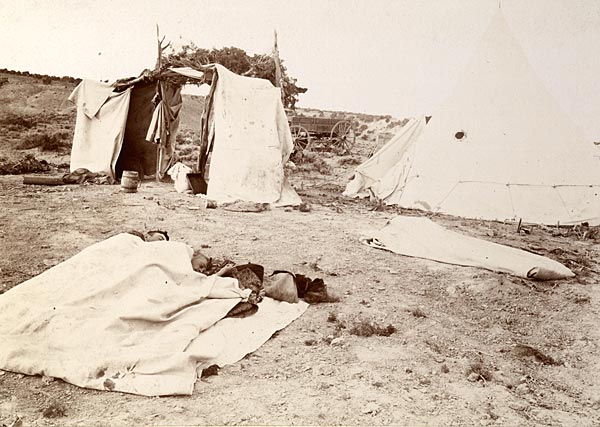|

1895 Eocene of Utah
The expedition left the museum on March 1st, 1895 and began work in the Unita Basin of Utah. Mr. Peterson from the Department of Mammals and Birds was set along with Mr. Walter Granger to collect wildlife, as well as collect fossils. Dr. Jacob Wortman joined them later in May; he was accompanied by Mr. J. D. Irving, a student of geology at Columbia College. Albert Thomson, who was wintering in Black Hills, joined the team later in the summer. A total of three months were spent in the Unita Basin and a collection of 200 to 300 fossil mammal specimens was made. The party camped for several days in the vicinity of the Ladore Canyon of the Green River enroute to the Washakie Basin in Southern Wyoming. Another stop was made at the crossing of the Green River, Jarvis Ferry to examine the so-called Brown's Park Formation. The scarcity of fossils precluded making a collection. From there the party pushed on to the Bitter Creek Desert, where they arrived in June. Camp was established at Kinney's Spring and work begun in the badland exposures to the Southwest of Hay Stack Mountain, as well as in the vicinity of LaClede Meadows. Not much was found in these localities, and it was determined to prospect the exposures lying to the south. Mountain fever, lack of grass, bad water and excessive heat made collecting difficult. Toward the end of August the party broke camp and took the collections to the Bitter Creek Station to be sent to the museum. From here the party moved southward to explore the region eastward of Powder Springs on the old Cherokee Trail with very little success. The party disbanded with Dr. Wortman and Mr. Irving returning east; Mr. Peterson was sent back to Utah; Mr. Granger and Thomson took the outfit into winter quarters in Nebraska.
|